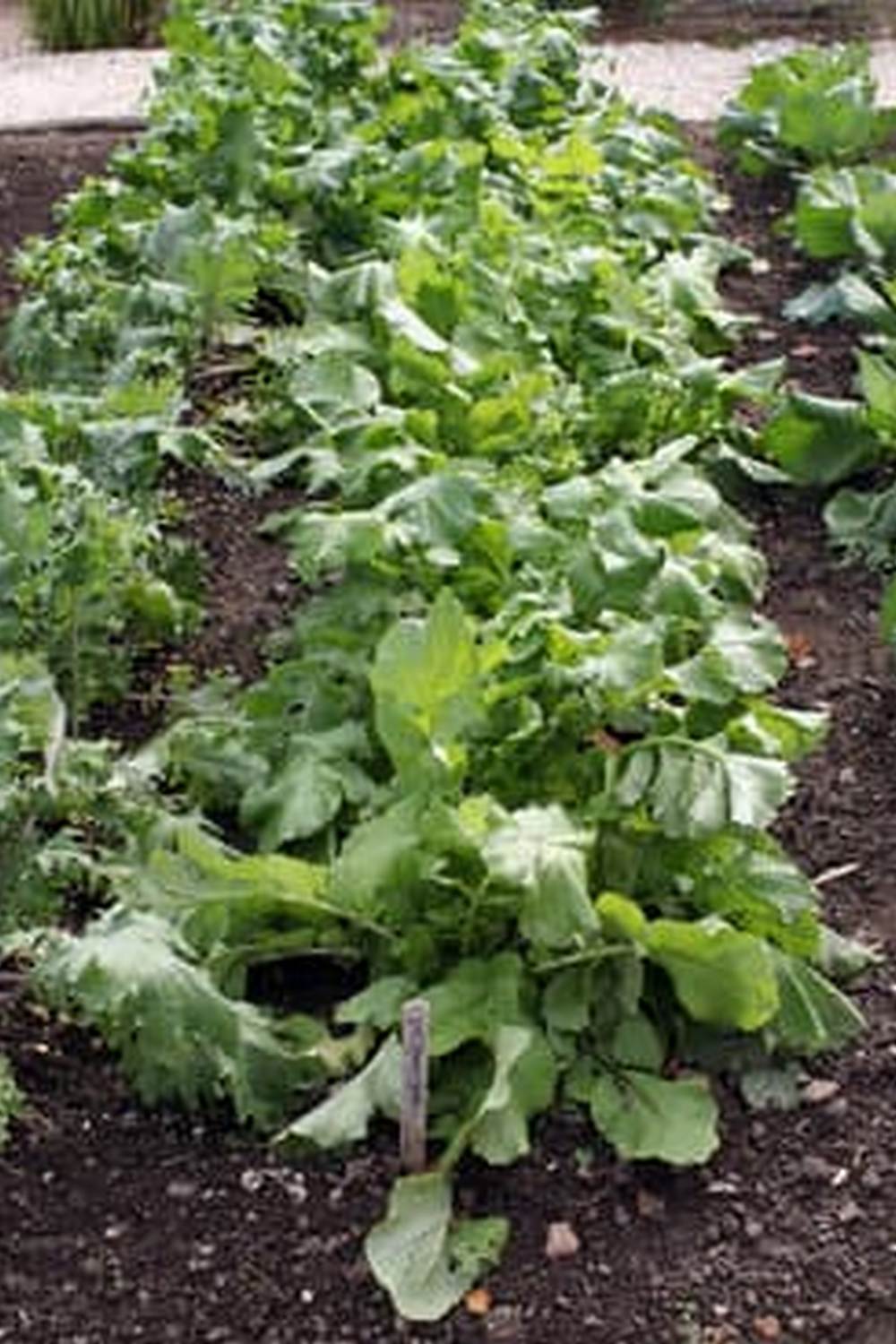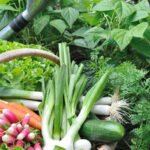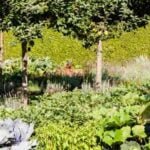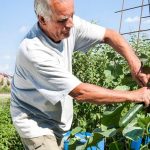Herb and vegetable container gardening is a fantastic way to enjoy fresh produce right at your fingertips, even if you have limited space. This method of gardening allows individuals to grow a variety of herbs and vegetables in small spaces such as balconies, patios, or even kitchen windowsills. By using containers, gardeners can control the soil quality, sunlight exposure, and water intake for their plants, resulting in healthier and more bountiful harvests.
One of the key benefits of herb and vegetable container gardening is the ability to have a diverse selection of fresh ingredients readily available for cooking. Imagine stepping outside your door to pick fresh basil for your pasta sauce or crisp lettuce leaves for a salad. Container gardening allows you to customize your plant selection based on your culinary preferences, ensuring that you always have access to the flavors you love.
Additionally, container gardening can be a therapeutic and rewarding hobby for individuals looking to reconnect with nature. Tending to your herb and vegetable containers not only provides physical activity but also promotes mental well-being through nurturing plants and watching them thrive. Whether you are a seasoned gardener or just starting out, herb and vegetable container gardening offers endless opportunities for creativity and enjoyment.
Choosing the Right Containers for Your Plants
When it comes to herb and vegetable container gardening, choosing the right containers is crucial for the success of your plants. The first consideration when selecting containers is the size – vegetables like tomatoes and peppers require larger pots, while herbs such as basil and parsley can thrive in smaller containers. Larger containers hold more soil which means better moisture retention and fewer chances of root-bound plants.
Another important factor to consider when choosing containers for your herb and vegetable garden is the material. Terracotta pots are classic and porous, allowing for good air circulation, but they can dry out quickly. Plastic or resin containers are lightweight and retain moisture better, making them suitable for beginners or those who may forget to water frequently. Wooden crates or barrels provide a rustic look and are great for larger plants like tomatoes.
It’s also essential to ensure that your chosen container has proper drainage holes to prevent waterlogging, which can lead to root rot. If your container doesn’t have drainage holes, make sure to drill some at the bottom before planting. Additionally, consider the aesthetics of your containers – mix and match different sizes, shapes, and colors to create an attractive display in your herb and vegetable container garden.
| Container Size | Ideal Vegetables/Herbs |
|---|---|
| Small (6-8 inches) | Basil, Parsley, Chives |
| Medium (10-12 inches) | Tomatoes, Peppers, Cucumbers |
| Large (16-20 inches) | Zucchini, Eggplant |
Picking the Perfect Location for Your Container Garden
When embarking on herb and vegetable container gardening, one of the crucial factors to consider is selecting the perfect location for your plants. The success of your container garden depends greatly on the amount of sunlight, temperature, and accessibility in the chosen spot.
Sunlight Requirements
Most herbs and vegetables thrive in full sun, requiring at least 6-8 hours of direct sunlight each day. When choosing a location for your containers, make sure that it receives adequate sunlight based on the specific needs of the plants you are growing. For herbs like basil and rosemary, they need plenty of sunlight to flourish and develop their flavors fully.
Temperature Considerations
Before placing your containers in a specific location, take note of the temperature fluctuations throughout the day. Some plants may be sensitive to extreme heat or cold, so it’s essential to find a spot that provides stable temperatures conducive to plant growth. Avoid placing containers near air conditioning units or heat sources that can adversely affect your plants.
Accessibility and Convenience
Another factor to consider when picking the perfect location for your herb and vegetable containers is accessibility. Make sure that the chosen spot is easily accessible for watering, pruning, harvesting, and overall maintenance. Placing your containers near a water source can also make watering more convenient and help ensure that your plants receive adequate hydration. By taking into account sunlight exposure, temperature stability, and accessibility, you can create an ideal environment for your herb and vegetable container garden to thrive.
Essential Tools and Supplies for Successful Container Gardening
When starting a herb and vegetable container garden, having the right tools and supplies is essential for success. Here are some key items that should be on your list when beginning your container gardening journey:
Containers
Choosing the right containers for your plants is crucial. Make sure they have sufficient drainage holes to prevent water from pooling at the bottom, which can lead to root rot. You can use a variety of containers such as terracotta pots, plastic containers, wooden crates, or even repurposed items like old buckets or baskets.
Quality Potting Mix
Using a high-quality potting mix specifically formulated for container gardening is important. This type of mix provides good drainage while retaining moisture and nutrients essential for healthy plant growth. Avoid using regular garden soil, as it tends to compact in containers and may not provide adequate aeration.
Gardening Tools
Having the right tools on hand will make caring for your container garden much easier. Basic tools such as a trowel, pruning shears, watering can or hose with a gentle nozzle attachment, and gloves are essential. Additionally, consider investing in a soil moisture meter to help you gauge when your plants need watering.
By ensuring you have the essential tools and supplies needed for successful herb and vegetable container gardening, you will be well-equipped to grow thriving plants in limited spaces. With proper care and attention to detail, you can enjoy fresh herbs and vegetables right at your fingertips throughout the growing season.
Selecting the Best Herbs and Vegetables for Container Growing
Herb and vegetable container gardening offers a wide range of possibilities when it comes to choosing what to grow in limited spaces. Some herbs and vegetables are particularly well-suited for thriving in containers, providing you with fresh produce right at your fingertips. When selecting which plants to grow in your container garden, consider popular options such as basil, parsley, cherry tomatoes, lettuce, peppers, and green onions.
Basil is a versatile herb that can be grown easily in a container. Its aromatic leaves are perfect for adding flavor to various dishes, making it a favorite among many home gardeners. Lettuce is another excellent choice for container gardening due to its compact growth habit and quick harvest time. With different varieties available such as leaf lettuce or romaine, you can enjoy a continuous supply of fresh salad greens throughout the growing season.
Cherry tomatoes are ideal for those looking to grow vegetables in containers with limited space. These small-fruited tomatoes thrive in pots and hanging baskets, producing an abundant harvest of sweet fruits. Green onions are also well-suited for container growing, adding a delicious onion flavor to salads and other dishes. By choosing the right herbs and vegetables for your container garden, you can create a thriving mini-garden that provides you with both culinary delights and decorative beauty.
| Herbs | Vegetables |
|---|---|
| Basil | Cherry Tomatoes |
| Parsley | Lettuce |
| Rosemary | Green Onions |
Proper Watering and Fertilizing Techniques for Container Plants
When it comes to herb and vegetable container gardening, proper watering and fertilizing techniques are crucial for the success of your plants. Container gardens have unique challenges compared to traditional ground gardens, such as limited soil volume and drainage issues. By following some simple guidelines, you can ensure that your herbs and vegetables thrive in their containers.
Here are some tips for properly watering and fertilizing your container plants:
- Watering: Container plants typically require more frequent watering than those planted directly in the ground. This is because containers dry out faster due to their limited soil volume. Check the moisture level of the soil regularly by inserting your finger into the top inch of soil. If it feels dry, it’s time to water.
- Fertilizing: Since container plants have limited access to nutrients in the soil, they will benefit from regular fertilization. Choose a balanced fertilizer specifically formulated for container plants and follow the recommended application rates on the packaging. It’s important not to over-fertilize, as this can lead to nutrient imbalances and plant burn.
In addition to proper watering and fertilizing, it’s important to consider the type of potting mix you use for your herb and vegetable containers. A high-quality potting mix designed for container gardening will provide good drainage and aeration for your plants’ roots.
Remember to also monitor your plants closely for any signs of overwatering or nutrient deficiencies, such as yellowing leaves or stunted growth. By paying attention to these details, you can enjoy a bountiful harvest from your herb and vegetable container garden.
Dealing With Common Pests and Diseases in Container Gardens
Container gardening is a popular and convenient way to grow herbs and vegetables, especially for those with limited space or poor soil quality. However, just like traditional gardens, container gardens are also susceptible to pests and diseases that can damage or kill your plants. Here are some common pests and diseases to watch out for in your herb and vegetable container garden:
- Aphids: These small insects can suck the sap from your plants, causing wilting and yellowing of leaves. To get rid of aphids, you can try spraying your plants with a mixture of water and dish soap.
- Fungus: Fungal diseases like powdery mildew can be a problem in container gardens, especially in humid conditions. To prevent fungal infections, make sure your containers have good drainage and avoid overcrowding plants.
- Caterpillars: Caterpillars can chew through leaves and damage your plants. Handpick them off your plants or use an organic insecticide to control their population.
To prevent pests and diseases from taking over your container garden, it’s essential to practice good gardening habits. Regularly check your plants for signs of infestations or infections, such as yellowing leaves, holes in foliage, or white powdery spots. Remove any affected plant parts immediately to prevent the spread of pests or diseases.
Remember that prevention is key when it comes to managing pests and diseases in your herb and vegetable container garden. By providing proper care for your plants, choosing disease-resistant varieties, and maintaining good hygiene practices in your garden, you can enjoy a bountiful harvest of fresh herbs and vegetables throughout the growing season without the threat of common pests and diseases ruining your hard work.
Harvesting and Enjoying the Fruits of Your Container Gardening Labor
Harvesting fresh herbs and vegetables from your container garden is one of the most rewarding parts of this gardening practice. Not only do you get to enjoy the fruits of your labor, but you also get to experience the satisfaction of growing your own food.
When it comes to harvesting herbs, it’s important to do so regularly to encourage new growth and ensure that your plants remain healthy. For vegetables, harvest them when they are at their peak ripeness for the best flavor and texture.
One of the advantages of herb and vegetable container gardening is that you can easily access your plants for harvesting. Simply step outside onto your patio or balcony, pick some fresh basil or cherry tomatoes, and incorporate them into your meals. The convenience of having a container garden just a few steps away from your kitchen makes it easy to add fresh flavors to your dishes whenever you need them.
Another benefit of harvesting from your herb and vegetable containers is that you can control when you pick your produce. This means that you can harvest herbs or vegetables as needed, ensuring that they are at their freshest when you use them.
By picking only what you need, you can minimize waste and enjoy the full flavor and nutritional benefits of homegrown produce. So whether you are adding a handful of basil leaves to a pasta dish or plucking a ripe bell pepper for a salad, container gardening allows you to savor the taste of freshly harvested ingredients in every bite.
Creative Ideas for Styling and Displaying Your Herb and Vegetable Containers
Container gardening offers a convenient and flexible way to grow herbs and vegetables, even in limited spaces. With the right containers, location, tools, and plant selections, anyone can create a thriving garden right on their balcony or patio. By embracing herb and vegetable container gardening, you not only enjoy the benefits of fresh produce but also elevate the aesthetic appeal of your outdoor living space.
When it comes to styling and displaying your herb and vegetable containers, creativity knows no bounds. Consider vertical gardens using hanging baskets or wall-mounted shelves to maximize your gardening area. Mix and match different types of containers for a visually interesting display, such as using colorful pots alongside traditional terracotta ones. Additionally, incorporating decorative elements like trellises or fairy lights can add a touch of whimsy to your container garden.
Furthermore, think outside the box when styling your herb and vegetable containers by repurposing household items like old barrels, crates, or even unused kitchenware. These unique containers not only add character to your garden but also demonstrate a sustainable approach to gardening by upcycling materials. By infusing creativity into the styling and display of your herb and vegetable containers, you transform them into functional pieces of art that enhance both your living space and overall well-being.
Frequently Asked Questions
What Vegetables and Herbs Grow Well Together in Containers?
Some vegetables and herbs that grow well together in containers include tomatoes and basil, since basil can help repel pests that can harm tomatoes. Carrots and radishes also complement each other as they have different root depths.
What Vegetables and Herbs Should Not Be Planted Together?
Vegetables and herbs that should not be planted together in containers include potatoes and tomatoes, as they are both susceptible to the same diseases. Another example is planting fennel near most garden vegetables, as it can inhibit their growth.
What Vegetables Are Good for Container Gardening?
Many vegetables are well-suited for container gardening, such as lettuce, spinach, kale, and other leafy greens that don’t require a lot of space to grow. Peppers, beans, peas, and cherry tomatoes also thrive in containers if provided with adequate support for climbing.

If you’re looking to get into vegetable gardening, or are just looking for some tips on how to make your current garden better, then you’ve come to the right place! My name is Ethel and I have been gardening for years. In this blog, I’m going to share with you some of my best tips on how to create a successful vegetable garden.





